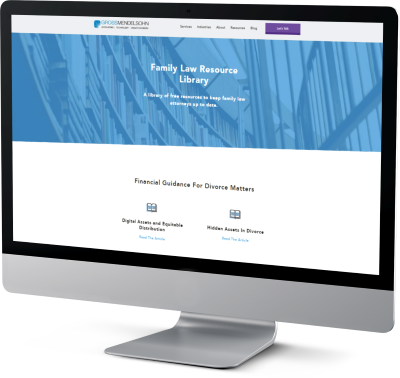A challenging aspect of any divorce proceeding is the division of assets — who gets what and how much?
With financial accounts, the challenge looms even greater. Premarital and marital money are often commingled, and combined with years of transactions and transfers in and out of an account, the chore of performing a precise calculation of the amount attributable to each spouse is often impossible.
What Does Virginia Code Say?
The Virginia code has acknowledged the difficulty of this task and tends to state that commingled premarital and marital accounts should be considered marital, as shown in the following excerpts from Virginia Code §20-107.3 regarding property division:
“When marital property and separate property are commingled by contributing one category of property to another, resulting in the loss of identity of the contributed property, the classification of the contributed property shall be transmuted to the category of property receiving the contribution. However, to the extent the contributed property is retraceable by a preponderance of the evidence and was not a gift, such contributed property shall retain its original classification”
“When separate property is retitled in the joint names of the parties, the retitled property shall be deemed transmuted to marital property. However, to the extent the property is retraceable by a preponderance of the evidence and was not a gift, the retitled property shall retain its original classification.”
However, the statute does provide a path for a different outcome if the “contributed property is retraceable by a preponderance of the evidence and was not a gift, such contributed property shall retain its original classification.”
What Happened In Our Recent Case
A recent case in which we participated has shown that a lot depends on the evidence provided and facts of the case.
The couple was married approximately two years. For most of the marriage, the husband bore the responsibility of financial support while the wife pursued post-graduate studies. During the marriage, the husband transferred his premarital savings into marital accounts, which were used to pay for routine day-to-day expenses as well as the wife’s tuition.
Shortly after the wife obtained her post graduate degree, the couple separated. Upon discussions of how to divide the assets, the parties hit a roadblock. The wife argued a substantial portion of the marital accounts should be considered marital and thus, partially her interest. The husband believed that a substantial portion should be considered his separate interest, since it had been mostly funded by his premarital funds.
At first glance, it could appear that Virginia law supports the wife’s claims. The husband had not segregated his premarital funds. They had been transferred into accounts that received marital money and the accounts were titled in both spouse’s names. In addition, Virginia code as well as prior cases such as Robbins v Robbins (“with each new transaction comes the risk of transforming the once separate property into marital property”) hinted that the property may have been transmuted to being marital.
With accounts where years of transfers, deposits and withdrawals had occurred, had enough time passed that the premarital, separate property lost its character? Could the purpose of each contribution and withdrawal be established?
We noted that this was a short marriage that lasted two years, in contrast with the case of Robbins v Robbins, which was a 30-year marriage. Further, the husband possessed all account statements for all of the accounts in question from the date of marriage through the trial date. Examining the contributions into the marital accounts, it appeared a significant amount of contributions came from the husband’s separate accounts in order to keep the marital accounts funded.
These details proved pivotal. As noted in the excerpts above, we argued that the Virginia code supported the conclusions of tracings and maintenance of original classification when adequate evidence existed and when the party arguing for a separate interest in property sustained their burden of retraceability. Due to the short length of the marriage, adequate evidence did exist and retracing was possible.
We noted in many cases, due to the length of the marriage and missing documentation, retracing was very difficult, which had contributed to prior court decisions classifying similar property as marital. However, this was not the case in this divorce. The court agreed with our analysis that tracing was possible and useful and further, that it showed the husband had disproportionately funded the marriage with his separate funds. As a result, the court agreed with the husband that he had a substantial separate interest in the marital accounts.
No Two Cases Are the Same
This case serves as a reminder that no two cases are exactly the same. While we acknowledged court precedents, we also noted compelling differences that led us to question their applicability to the case at hand. Courts judge cases based on a variety of factors, including the length of the marriage, the financial and non-financial contributions made by each spouse, as well as documentation available, among other factors.
At the end of the day, it’s important to examine the facts with the parties involved to determine how your unique case may be interpreted under your state’s code of law.
Need Help?
Contact us here or call 800.899.4623.


